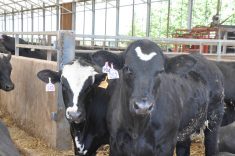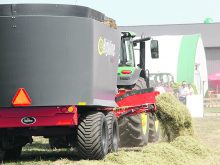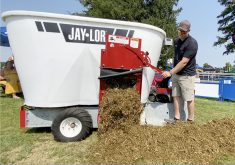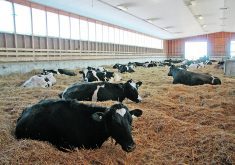Glacier FarmMedia – Hay fed to dairy cows for two days after calving can help animals with health issues.
Cows are fed high starch diets at calving as they ramp up milk production, which helps manage ketosis and fatty liver, but it also increases risk of acidosis and inflammation.
Masahito Oba, a researcher at the University of Alberta, says researchers there conducted experiments on starch levels and found conflicting results. At the recent Western Canadian Dairy Seminar in Red Deer, he suggested that cows fed low starch diets before calving could benefit from being eased into a high starch diet after calving.
Read Also
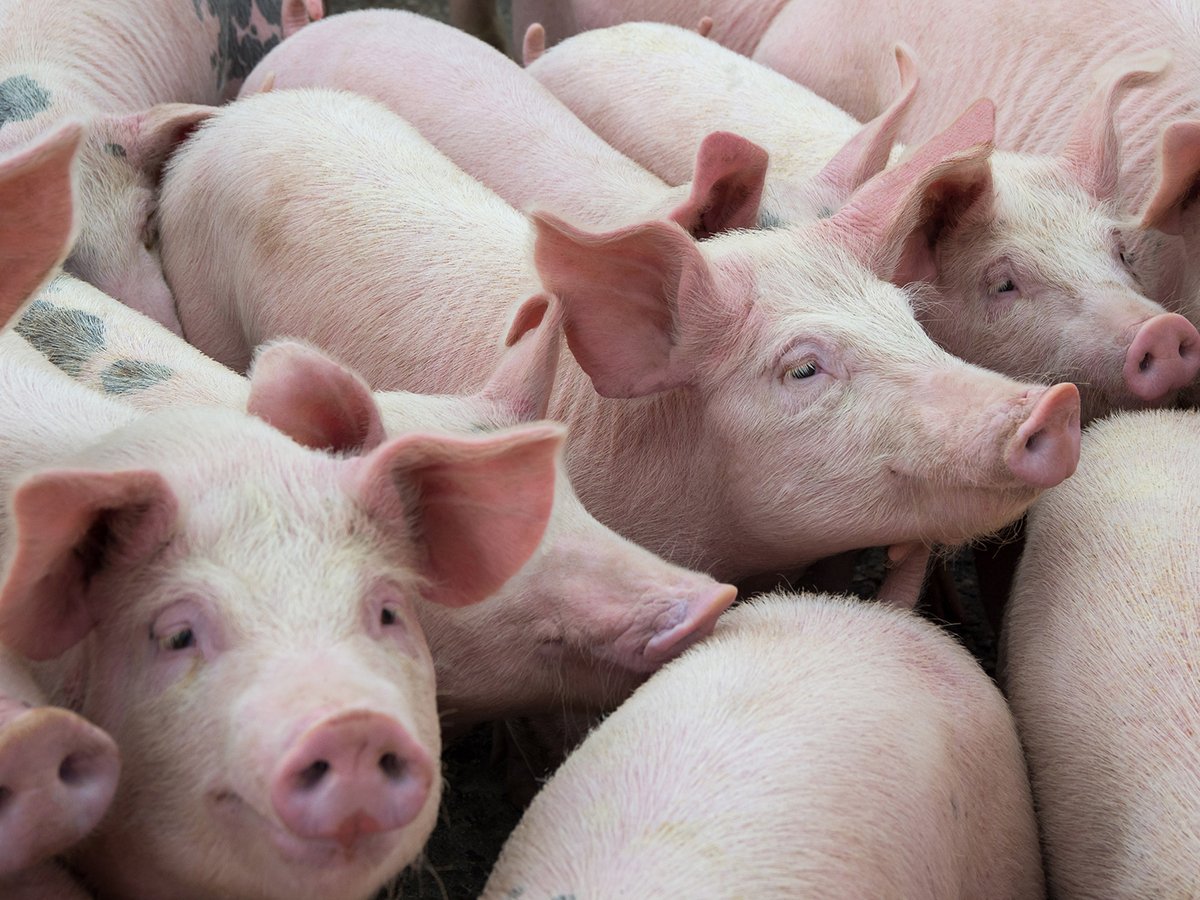
Quebec pork company calls for transparency around gene-edited pigs
Quebec-based pork company duBreton is calling for transparency around meats from gene-edited pigs on concerns that a lack of mandatory labelling will confuse consumers, and dilute certification claims. The organic sector is also calling for labelling rules.
Hay can help in some cases in which cows already have acidosis or inflammation.
Oba and his group recently published two papers based on the hay research.
They fed a group of fresh cows a total mixed ration (TMR) and another group TMR and free choice hay.
The timothy hay was low quality – 10 per cent crude protein with neutral detergent fibre of 61.6 per cent. Some cows ate a lot of hay in the first two days after calving and some ate only TMR.
Cows that didn’t eat a lot of the dry cow TMR in the days before calving were more likely to eat hay. Cows with high betahydroxybutyrate — an indicator of ketosis — and cows with inflammation all had higher hay intake.
“In other words, sick cows appreciated hay by consuming more,” said Oba, at least for the first five days post-calving.
Hay for cows could be like chicken soup that people consume when they are feeling ill.
“If you’re feeling normal, you might prefer the steak meal.”
Farms feed TMRs because they allow precise ration formulation, are palatable and efficient to feed, but giving fresh cows access to dry hay could help them through their most challenging period.






